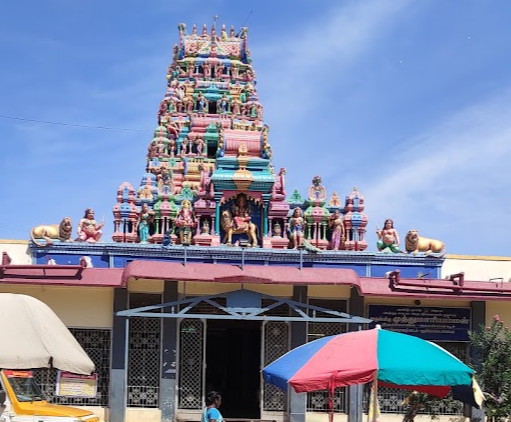Sage Valmiki, seeking redemption from his past life of robbery and murder (a story debated and refuted by some Ramayana scholars), performed intense penance in this area, which was thick with Kondrai trees. Over time, he was enveloped by an ant-hill, called Vanmeekam in Sanskrit and Puttru in Tamil. Pleased with his deep penance, Lord Shiva appeared and granted him darshan near the ant-hill. Hence, Lord Shiva here is revered as Puttreeswarar. The town itself came to be known as Thiruppathur, derived from the Tamil words for this sacred event. The temple was built by kings to honour this divine episode.
Legend :
Snakes Vasuki and Karkodakan Worshipped Shiva: According to legend, the serpent's Vasuki and Kaarkotakan worshipped Lord Shiva at this sacred site. Due to this, there is a dedicated shrine for Tirunageswarar in the third prakaram (outer courtyard) of the temple.
Pranavam Manifested as the Kondrai Tree: It is believed that the sacred syllable Pranavam (Om) realised that Shiva and Pranavam were one and the same. As a result, Pranavam is said to have manifested itself in the form of the Kondrai tree in this holy place.
Mahalakshmi's Wish to Witness Shiva's Cosmic Dance: Legend has it that Goddess Mahalakshmi desired to witness Lord Shiva’s Cosmic Dance. In response to her wish, Lord Shiva promised her that she could witness His divine dance at this sacred temple. Accordingly, Shiva revealed a vision of His Gowri Thandavam, a form of cosmic dance, to Goddess Mahalakshmi here.
Lord Shiva Granting Darshan to Sage Valmiki: Sage Valmiki, seeking redemption from his past sinful life, performed penance here, surrounded by Kondrai trees. Over time, an ant-hill (known as Vanmeekam in Sanskrit and Puttru in Tamil) formed around him. Pleased with his penance, Lord Shiva granted him darshan near the ant-hill. Hence, Lord Shiva is revered as Puttreeswarar. The town’s name, Tiruputhur, is derived from this event. The temple was built by kings to commemorate this divine darshan.
Devotees Who Worshipped Lord Shiva Here: Several revered figures are said to have worshipped Lord Shiva at this temple, including Sage Agasthyar, Sage Valmiki, and Jayandhan, the son of Devendran (Indra).
Administration History :
The administration of the temple began with its original construction, likely before the 6th century, followed by reconstructions during the Pandya and Vijayanagara Nayak periods. The Maha Mandapam was built by the Maruthu Pandiyars, and the Rajagopuram was added later during the Nayak era. Currently, the temple is managed by the Kundrakudi Ponnambala Adikal. Historical inscriptions document various endowments and contributions from regional kings, reflecting the temple's sustained significance over centuries.
